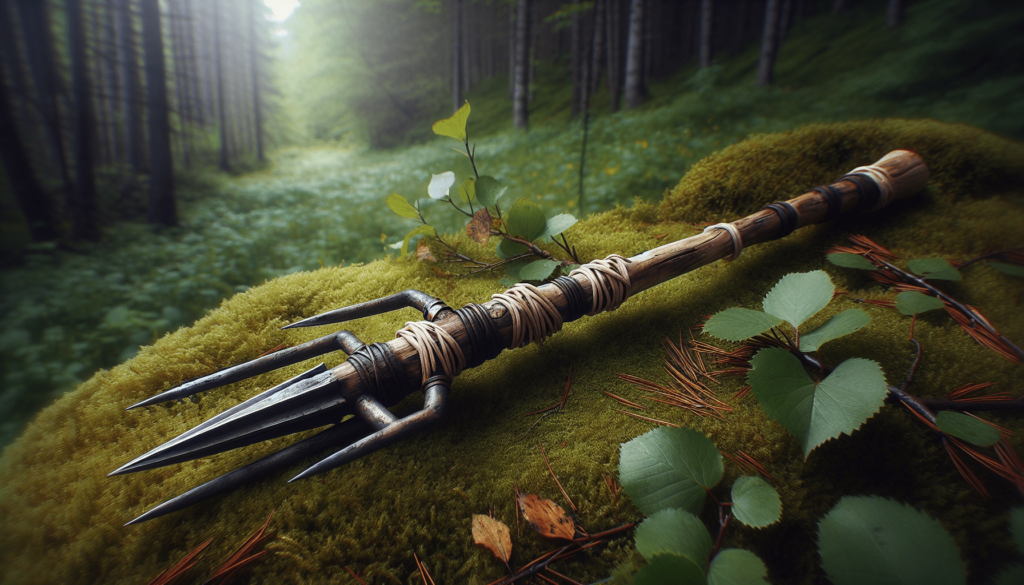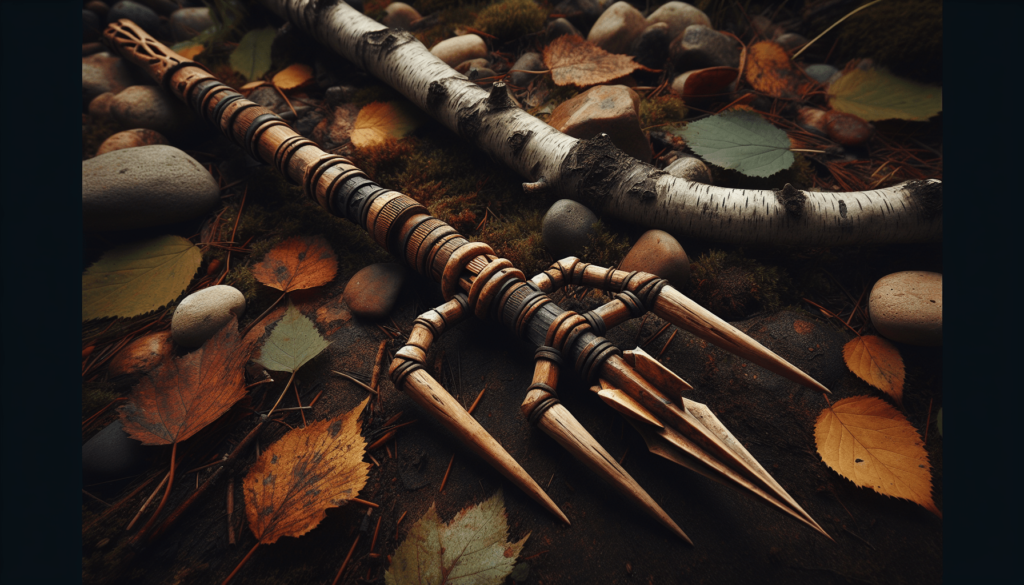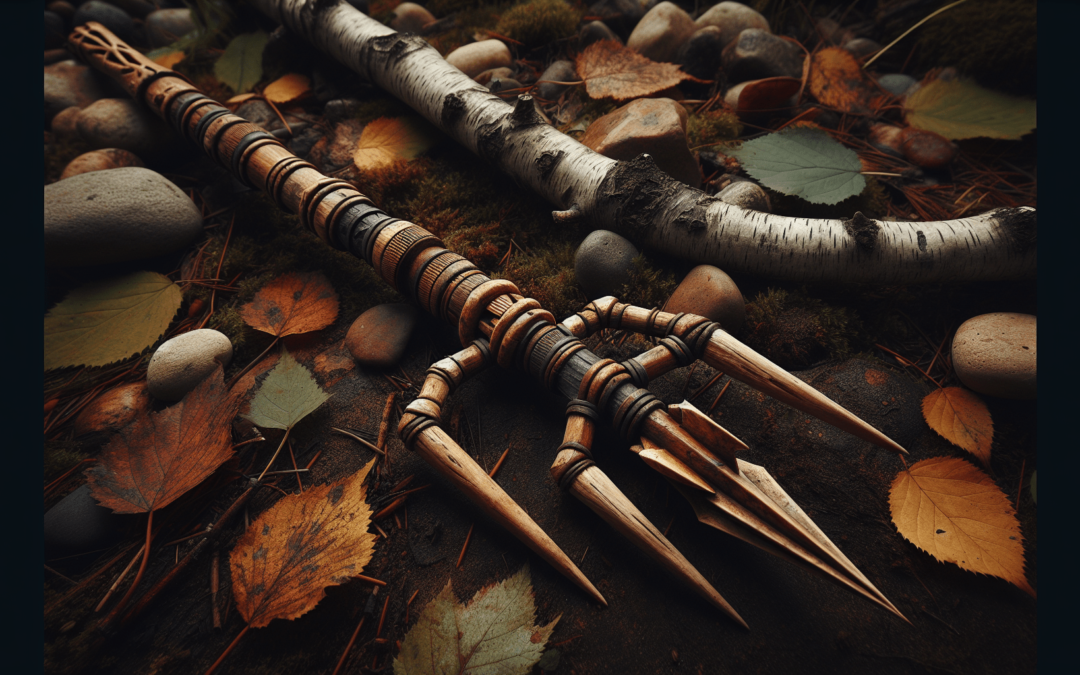Crafting a Fishing Spear for Survival Situations is your go-to guide for mastering a vital survival skill. Picture yourself needing to secure food in the wild; this article shows you step-by-step how to create an effective fishing spear using natural materials. Whether you’re an experienced outdoors enthusiast or new to survival techniques, you’ll find this informative and engaging read invaluable for your journey into self-reliance. Have you ever wondered how you’d survive if you were stranded in the wilderness with no food? One of the best skills to have in such situations is the ability to catch your own food. While fishing rods and nets might be out of reach, a fishing spear can be a simple yet effective tool in a survival scenario. Crafting a fishing spear isn’t just a throwback to ancient times; it’s a practical skill for survival that can mean the difference between a meal and going hungry.

Understanding the Importance of a Fishing Spear
Before diving into the crafting process, it’s essential to understand why a fishing spear can be a crucial tool. Fish are a valuable source of protein and nutrients. In survival situations, having a method to efficiently catch fish can sustain you and provide much-needed energy.
Benefits of a Fishing Spear
- Simplicity: Unlike fishing rods or nets, spears are easy to make with minimal tools.
- Efficiency: A well-crafted spear can target fish quickly and accurately.
- Durability: Spears made from strong materials can last a long time, making them reliable tools.
Now that you understand why a fishing spear is important, let’s explore how you can make one.
Choosing the Right Materials
Your first step in crafting a fishing spear is selecting the right materials. The materials available will largely depend on your environment, but here are some general guidelines.
Basic Requirements
| Material | Description |
|---|---|
| Wooden Shaft | A straight, sturdy piece of wood around 6-8 feet long |
| Sharp Points | Metal, bone, or sharpened wood |
| Binding Material | Plant fibers, rope, or sinew |
Finding Wood for the Shaft
The shaft will form the backbone of your fishing spear. You’ll need a piece of wood that’s long enough to provide reach and sturdy enough to withstand repeated use.
- Look for Hardwoods: Species like oak, hickory, or maple are ideal.
- Check for Straightness: A straight piece will be easier to work with and more dependable.
- Test the Sturdiness: Ensure the wood isn’t brittle or rotten.
Selecting Sharp Points
The tip of your spear is just as vital. You can use:
- Metal: If you find metal scraps, they can be shaped into sharp points.
- Bone: Animal bones can be sharpened and affixed to the end of your spear.
- Sharpened Wood: You can also carve the end of the wooden shaft itself into a sharp point.
Gathering Binding Material
Binding materials hold everything together. Depending on what’s available, you can use plant fibers, rope, or sinew. Strong vines or stringy bark can work well in a pinch.
Crafting a Simple Fishing Spear
Once you have all your materials, it’s time to start crafting.
Shaping the Shaft
- Smooth the Wood: Remove any knots or bark.
- Carve the Tip: Sharpen one end of the shaft using a knife or sharp rock.
Adding the Sharp Points
- Split the End: Split the sharpened end into 2-4 sections. This can increase your chances of catching fish.
- Insert Sharp Points: If using metal or bone tips, insert them into the split sections.
- Binding: Use your binding material to tightly secure the tips and prevent the wood from splitting further.
Creating Barbs
Adding barbs to your spear can make it more effective. Here’s how:
- Carve Small Notches: Along the tips, carve small notches that point backward.
- Sharpen the Barbs: Ensure these notches are sharp enough to catch and hold the fish.
Utilizing Advanced Techniques
While a simple fishing spear is effective, adding some advanced techniques can enhance your survival tool.
Multipronged Spear
A multipronged spear increases your chances of success by allowing you to hit multiple points at once.
- Create Multiple Tips: Instead of a single sharp point, split the end into multiple prongs.
- Shape and Sharpen: Individually sharpen and barb these prongs.
Detachable Tips
A detachable tip reduces the force transferred through the spear when a fish is struck, making it less likely to escape.
- Secure the Base: Attach a removable tip tightly at the spear’s end.
- Tie a Line: Connect a rope from the tip to the spear, ensuring retrieval if the tip detaches.

Strategies for Effective Spearfishing
Now that your fishing spear is ready, let’s explore some tactics to improve your success rate.
Identify the Right Location
Fishing in the right spot can make all the difference.
- Shallow Waters: Fish are easier to spot and spear in shallow waters.
- Near Rocks and Vegetation: Fish tend to congregate around these areas for food and shelter.
Timing is Key
Fish are more active during certain times of the day.
- Early Morning and Dusk: These times are typically the best to find fish closer to the shore.
Act with Stealth
Fish can detect movement and vibrations.
- Move Slowly: Approach the water quietly and avoid sudden movements.
- Minimize Vibrations: Step lightly to avoid alerting the fish.
Spearing Technique
Your technique when using the spear is crucial for a successful catch.
- Aim Ahead: Fish move quickly, so aim slightly ahead of your target to compensate for movement.
- Keep Your Eye on the Fish: Focus on the fish and not the water’s surface.
- Thrust with Precision: Use a quick, sharp thrust to spear the fish.
Practice Makes Perfect
Like any skill, practice improves your ability.
- Start with Stationary Targets: Sharpen your accuracy by aiming at submerged objects.
- Gradually Progress: Move on to fish as you become more confident.
Safety Considerations
Using a fishing spear requires caution. Here are some tips to keep you safe:
Handling the Spear
- Keep the Spear Pointed Down: Always point the tip away from you and others when not in use.
- Check for Sharpness: Ensure the spear is sharp enough for effective use but be mindful of injury risk.
Water Safety
- Beware of Underwater Hazards: Watch out for rocks, sharp objects, and strong currents.
- Consider Water Temperature: Hypothermia can be a risk in cold waters, so limit your time submerged.
Wildlife Awareness
- Stay Vigilant: Be aware of other wildlife that could pose a danger, like snakes or predatory animals.
- Use Clear Water: Spearfishing in murky water increases the risk of encountering animals unexpectedly.
Enhancing Your Survival Skills
Creating and using a fishing spear is an invaluable survival skill, but it’s just one piece of the puzzle. Here are additional survival skills to complement your spearfishing ability:
Building a Shelter
Protecting yourself from the elements is crucial for survival. Learn how to:
- Construct a Lean-To: Use branches and leaves to create a simple shelter.
- Utilize Natural Caves: If available, caves can provide immediate shelter.
Starting a Fire
Fire provides warmth, cooking capabilities, and a means to signal for help.
- Collect Dry Tinder: Gather materials that ignite easily, like dry leaves or bark.
- Use a Firestarter: Whether it’s a flint, magnifying glass, or matches, always have a reliable firestarter.
Purifying Water
Clean water is essential. Several methods can ensure safe drinking water:
| Method | Description |
|---|---|
| Boiling | Heat water until a rolling boil for at least one minute. |
| Filtration | Use a homemade filter from layers of sand, charcoal, and cloth. |
| Chemical Treatment | Use purification tablets or natural substances like iodine. |
Identifying Edible Plants
While fish can be your primary food source, supplementing with plants can provide essential vitamins and minerals.
- Learn Plant Identification: Educate yourself on local edible and medicinal plants.
- Test for Safety: Use the universal edibility test to ensure plants are safe to eat.
Conclusion
In survival situations, being able to craft and effectively use a fishing spear can make the difference between sustenance and starvation. It’s a skill that’s both ancient and incredibly relevant today. By understanding the importance, choosing the right materials, crafting your spear, and employing effective fishing techniques, you can significantly enhance your chances of survival.
Remember, safety is paramount, and continuous practice is essential. The wilderness can be unpredictable, but with the right skills and knowledge, you’ll be better equipped to handle any challenge that comes your way. Your spear might be a humble tool, but in your hands, it could be the key to survival.

